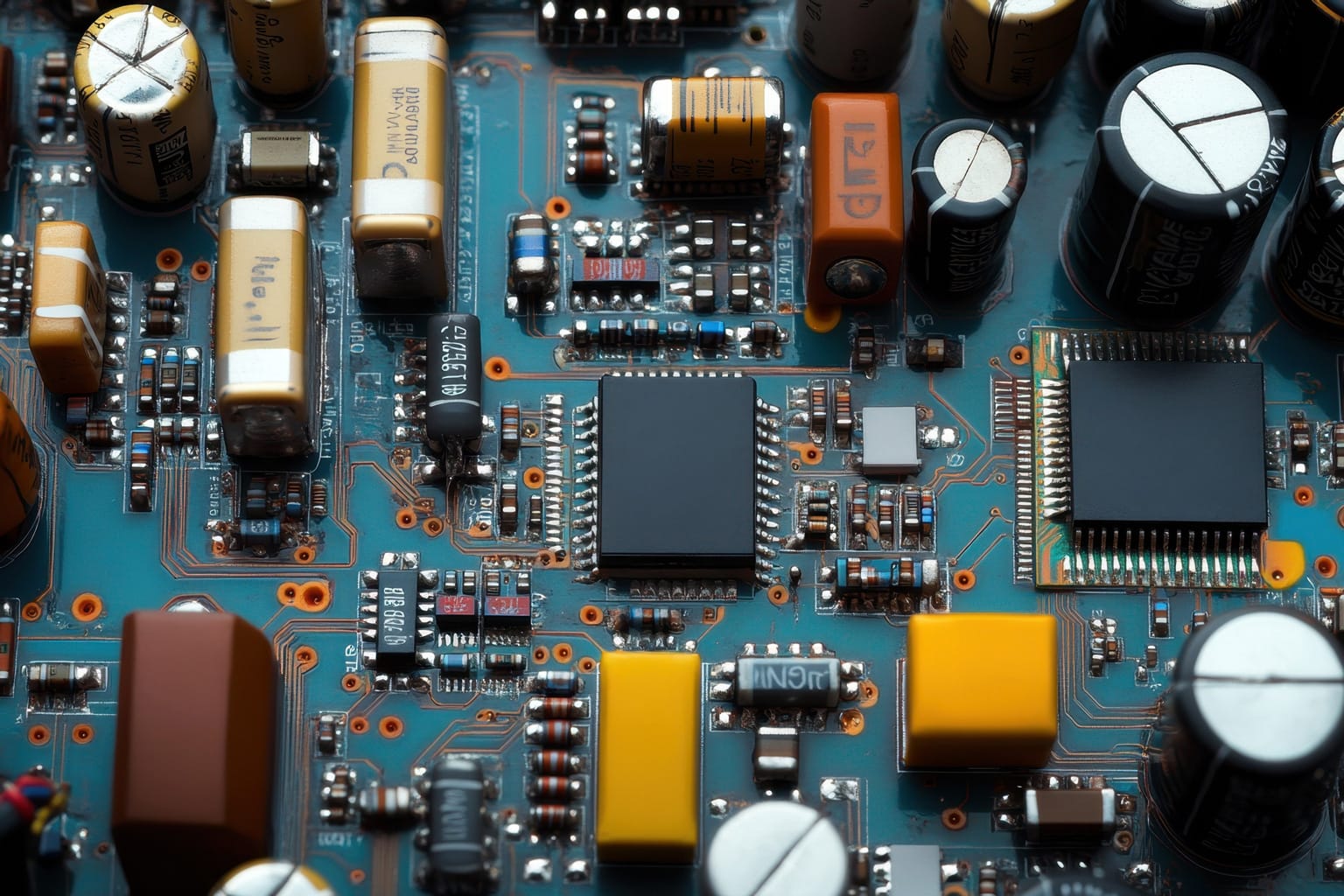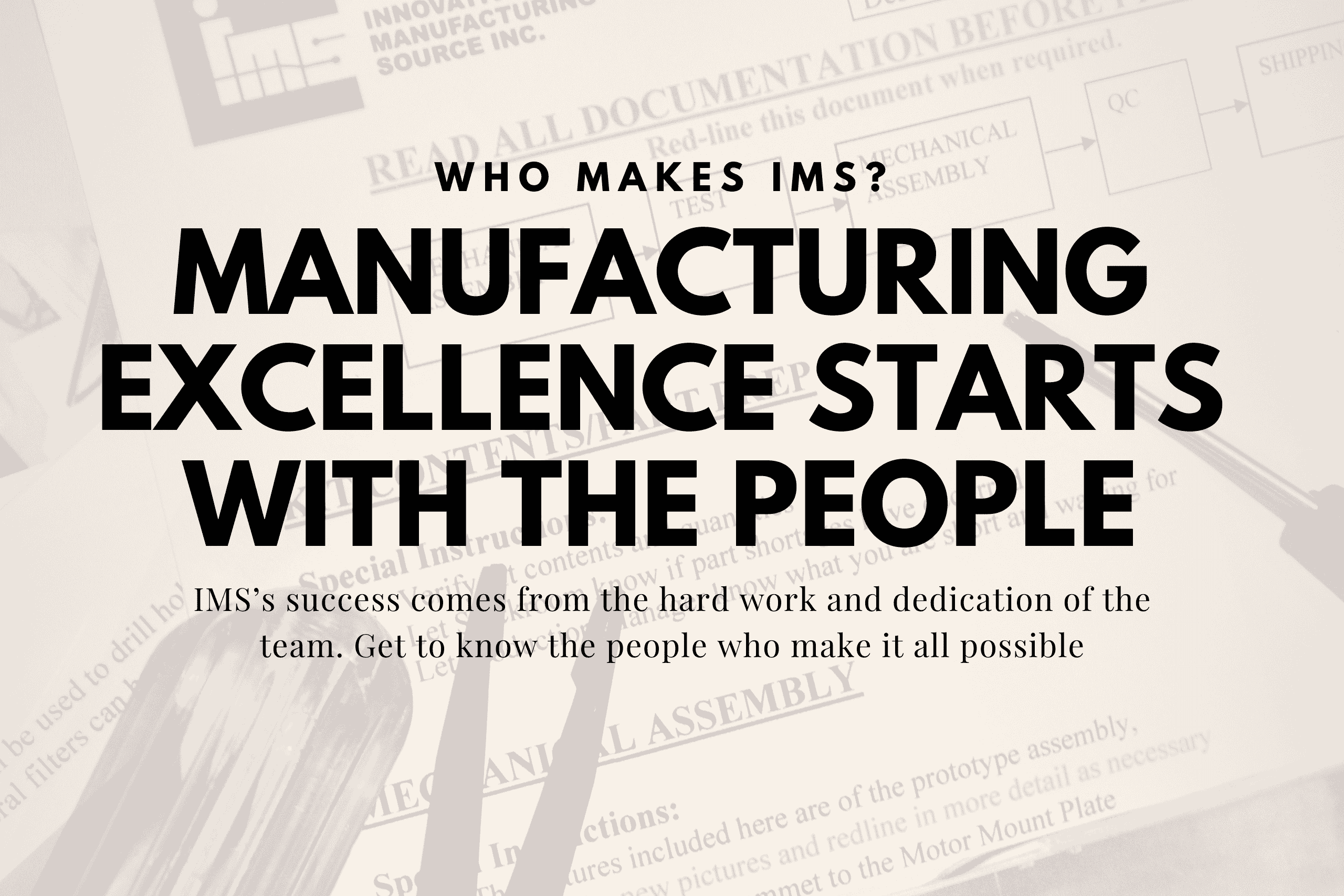Your product is selling well. Production is running smoothly. Then the notice arrives: a critical component in your design is going end-of-life. The manufacturer is discontinuing it, and you have six months to find an alternative or make a last-time buy.
Component obsolescence is one of the most disruptive challenges in electronics manufacturing—and it affects nearly every company with products that have multi-year lifecycles. Unlike quality issues or supply chain delays that can be resolved, component obsolescence forces fundamental decisions: redesign your product, stockpile components for years, or discontinue the product entirely.
Component obsolescence is predictable and manageable…if you plan ahead. Companies that take a proactive approach can navigate these transitions smoothly, while those caught off guard face expensive emergency redesigns, production disruptions, and unhappy customers.
This guide explains what component obsolescence means for your electronics manufacturing strategy, why it matters more than many companies realize, and how to build resilience into your product lifecycle planning.
Table of Contents
Understanding Component Obsolescence in Electronics Manufacturing
Component obsolescence happens when electronic component manufacturers discontinue products. It’s not a matter of if components become obsolete—it’s when.
The Component Lifecycle Stages
Electronic components move through predictable lifecycle stages:
🟢 Active
The component is in full production, readily available, and recommended for new designs.
🟡 NRND (Not Recommended for New Designs)
The manufacturer signals they’re phasing out the component. It’s still available for existing products but shouldn’t be designed into new projects. This is your early warning signal.
🟠 EOL (End of Life)
The manufacturer announces a specific discontinuation date. After this date, no more production runs will occur. This is when last-time buy opportunities happen.
🔴 Obsolete
The component is no longer manufactured. Availability is limited to remaining distributor stock or secondary market suppliers.
Understanding these stages helps you recognize warning signs and plan appropriate responses.
Why Components Become Obsolete
Several factors drive component obsolescence:
→ Technology advancement. Newer, better components replace older designs. As demand shifts to newer technology, manufacturers discontinue older parts.
→ Low demand. When sales volume for a component drops below profitable levels, manufacturers discontinue the product line.
→ Manufacturing changes. Shifts in production technology or materials can make older components impractical to manufacture.
→ Company consolidation. Mergers and acquisitions often lead to rationalized product lines, with overlapping components being discontinued.
→ Regulatory changes. Environmental regulations or material restrictions can force component redesigns or discontinuations.
Typical Component Lifecycles
Most electronic components have lifecycles of 5-15 years, though this varies significantly:
⏳ Standard passive components (resistors, capacitors) typically enjoy longer lifecycles, often 15-20 years or more.
⏳ Integrated circuits and specialized semiconductors average 7-12 years, depending on market demand.
⏳ Cutting-edge processors and FPGAs have shorter lifecycles, sometimes 5-7 years, as technology advances rapidly.
⏳ Connectors and electromechanical components vary widely based on whether they’re standard or specialized designs.
For context, if your product has a 10-year lifecycle, you’ll likely face component obsolescence issues at least once (and possibly multiple times).
Why Component Obsolescence Matters for Your Business
Component obsolescence creates several business challenges that extend beyond simple parts replacement:
1. Production Disruption
The most immediate impact is the potential inability to manufacture your product. When a critical component becomes unavailable, production stops until you find an alternative—which can take weeks or months depending on complexity.
This disruption affects your ability to fulfill customer orders, meet contractual obligations, and maintain revenue from established products.
2. Financial Impact
Component obsolescence carries significant costs:
- Redesign expenses: Engineering time to find alternates, update designs, and verify functionality.
- Re-certification costs: Many industries (medical devices, aerospace, automotive) require recertification when components change, adding months and significant expense.
- Last-time buy inventory: Purchasing years of component inventory ties up capital and requires storage.
- Premium sourcing: Obsolete components often command premium prices on secondary markets.
- Lost sales: Revenue lost during the transition period when you can’t manufacture products.
3. Customer Relationships
Component obsolescence can affect your customer commitments:
Products may need to be discontinued earlier than customers expected. Spare parts availability for fielded products becomes challenging. Long-term support commitments become difficult to honour.
Companies with strong customer relationships work hard to manage these transitions smoothly, but it requires planning ahead.
4. Competitive Disadvantage
While you’re dealing with component obsolescence, your competitors may not be. The time and resources spent on redesigns could have been invested in new product development or market expansion.
Industries Most Affected by Component Obsolescence
Some industries face greater component obsolescence challenges due to their product lifecycles:
→ Medical devices often have 10-15 year lifecycles due to lengthy regulatory approval processes. Component changes require recertification, making obsolescence particularly disruptive.
→ Industrial equipment regularly operates for 15-20 years in the field, requiring long-term parts availability for maintenance and repairs.
→ Aerospace and defense products can remain in service for decades, creating extended support requirements that often outlive component availability.
→ Oil and gas equipment deployed in remote locations needs reliable long-term parts availability, as field replacements are expensive and complex.
→ Transportation systems (rail, automotive, and marine) combine long product lifecycles with safety certification requirements that make component changes costly.
If your company serves any of these industries, proactive component obsolescence planning is essential for electronics manufacturing success.
Early Warning Signs of Component Obsolescence
Catching component obsolescence early provides more options and reduces disruption. Watch for these signals:
Official Manufacturer Notices
NRND announcements are your first and most important warning.
When a manufacturer marks a component “Not Recommended for New Designs,” start planning immediately. You typically have 1-3 years before the EOL announcement.
Product line consolidation announcements often precede component discontinuations. Pay attention when manufacturers announce mergers, acquisitions, or strategic shifts.
Market Indicators
Several market signals suggest potential obsolescence:
- Lead times are increasing significantly without broader supply chain issues affecting similar components.
- Minimum order quantities jumping dramatically. Manufacturers often increase MOQs as they wind down production.
- Distributor availability declining while manufacturer status remains “active.” This can indicate reduced production volumes.
- Price increases that seem disproportionate to general market conditions.
Technical Indicators
Certain component characteristics suggest higher obsolescence risk:
- Single-source specialized ICs with no alternates available.
- Older technology nodes (for semiconductors) as manufacturers shift to newer processes.
- Low-volume niche components with declining market demand.
- Components from smaller manufacturers with limited product lines.
- Parts with declining market share as newer alternatives gain adoption.
Proactive Monitoring
Rather than waiting for problems, establish regular component monitoring:
Check manufacturer product status quarterly for critical components. Monitor industry news for manufacturers in your supply chain. Build relationships with distributors who can provide early warnings. Work with your electronics manufacturing partner who can track component lifecycle status across multiple customer products.
At IMS, we proactively monitor component lifecycles and alert customers when we see early warning signs. This gives our partners time to plan rather than react to crises.
Strategies to Manage Component Obsolescence
Effective obsolescence management combines proactive design practices with strategic planning:
Strategy 1: Design for Component Longevity
Component selection during design significantly impacts long-term viability:
- Choose widely used standard parts that have an established market presence and high production volumes. These typically have longer lifecycles than specialty components.
- Favour components from major manufacturers with broad product lines and long track records. Larger manufacturers typically provide longer component support.
- Avoid bleeding-edge technology for products with long expected lifecycles. Recently introduced components may have uncertain futures.
- Design with substitution in mind by using standard footprints and pinouts where possible, making future component changes easier.
- Document design rationale for component selection. Understanding why specific parts were chosen helps evaluate alternates later.
Strategy 2: Build Manufacturer Relationships
Strong relationships with component manufacturers provide advantages.
Maintain communication with manufacturers’ product line managers. Request lifecycle roadmap information during the design phase. Ask to be notified of product status changes. Understand their long-term product strategy and technology direction.
Component manufacturers generally try to support customers through transitions when they have advance notice and good relationships.
Strategy 3: Create Component Substitution Plans
Don’t wait for obsolescence to identify alternates:
- Identify potential substitutes during the design phase before you need them. Document alternate part numbers that meet form, fit, and function requirements.
- Test and qualify critical alternates proactively. Some companies keep qualified alternates on file, ready to implement if needed.
- Document alternate approval in your BOM so your electronics manufacturing partner can substitute quickly if needed.
- Maintain streamlined change processes so alternate implementation doesn’t become a bureaucratic obstacle.
This preparation dramatically reduces disruption when obsolescence occurs.
Strategy 4: Strategic Inventory Management
For critical, long-lifecycle products, strategic inventory approaches can help:
- Lifetime buys for low-volume, critical components can make sense if storage costs and obsolescence risk are manageable. Calculate total lifecycle demand carefully to avoid overbuying.
- Consignment inventory agreements with your manufacturing partner can distribute inventory holding costs and risk.
- Coordinated buys with other customers of the same manufacturer sometimes provide better pricing and terms.
However, inventory strategies have risks: components can degrade in storage, design changes may make inventory obsolete, and capital is tied up in parts sitting on shelves. Balance these risks against redesign costs when making inventory decisions.
Strategy 5: Partner with Your EMS Provider
Your electronics manufacturing services partner can be a valuable ally in obsolescence management.
Experienced manufacturers track component lifecycles across multiple customer products. They often see obsolescence patterns before individual customers do. They maintain distributor relationships and component sourcing expertise. They can help evaluate alternate components for manufacturability and availability.
At IMS, we view component lifecycle management as part of our partnership responsibility. When we see early warning signs for components our customers use, we reach out proactively to discuss options and timelines.
Strategy 6: Plan for Periodic Redesigns
Rather than treating redesigns as emergencies, build them into your product roadmap:
- Budget for product refreshes every 5-7 years as part of normal product lifecycle management.
- Use obsolescence as an opportunity to implement improvements, update features, or reduce costs.
- Maintain design documentation so updates are straightforward rather than requiring reverse engineering.
- Plan redesign timing around other product updates to minimize disruption and maximize value.
This proactive mindset transforms obsolescence from crisis to planned evolution.
What to Do When Component Obsolescence Happens
Despite the best planning, you’ll eventually face component obsolescence. Here’s how to respond effectively:
Immediate Assessment
When you receive an obsolescence notice:
- Verify your current inventory and calculate how long it will last based on production forecasts.
- Review the obsolescence timeline. How much time do you have before final orders must be placed?
- Assess the component’s criticality. Is this part essential to product function, or could the design work without it?
- Identify who’s affected. Which products use this component, and what are their lifecycle expectations?
Evaluate Your Options
You typically have five primary paths:
1. Last-time buy.
Purchase enough components to cover the remaining product lifecycle. Calculate carefully based on realistic forecasts, consider storage requirements and component shelf life, factor in inventory holding costs, and evaluate financial risk if demand projections change.
2. Redesign with alternate components.
Find a form-fit-function compatible alternate, test and validate alternate performance, update documentation and manufacturing files, plan re-certification if required in your industry, and implement change with minimal production disruption.
3. Find a drop-in substitute.
Identify components that match the exact footprint, pinout, and specifications of the obsolete part. Drop-in substitutes require minimal or no design changes, making them the fastest path to resolution when available. Verify compatibility through testing before committing to production volumes.
4. Disable product features affected by obsolescence.
If the obsolete component supports a non-critical feature, consider removing or disabling that functionality rather than redesigning the entire product. This works when the affected feature has low usage or when customer requirements have shifted. Communicate clearly with customers about functionality changes and provide adequate notice.
5. Product discontinuation.
Sometimes products are near end-of-life anyway, and the obsolescence accelerates a planned discontinuation. Communicate with customers about timeline and transition plans, fulfill any contractual obligations for spare parts or support, and manage orderly phase-out.
Execute the Plan
Once you’ve chosen an approach:
- Communicate with stakeholders: Engineering, manufacturing, quality, sales, and customer service all need to understand the plan and timeline.
- Coordinate with your manufacturing partner: They need time to implement changes, qualify new processes, or manage last-time buy inventory.
- Update all documentation: Don’t let BOM and assembly documents get out of sync with actual production.
- Plan testing and validation: Ensure alternates work properly before committing to full production.
- Monitor progress closely: Obsolescence responses often reveal unexpected challenges. Stay engaged through implementation.
Learn and Improve
After managing an obsolescence event:
- Document lessons learned: What worked well? What would you do differently?
- Update component selection guidelines based on experience.
- Strengthen early warning processes so you catch the next one sooner.
- Review other products for similar vulnerability to obsolescence.
Each obsolescence event makes your processes stronger—if you capture and apply the lessons.
How IMS Helps Manage Component Obsolescence
At IMS, we view component lifecycle management as an important aspect of our partnership with customers. Our approach includes:
✅ Proactive monitoring.
We track component lifecycle status for parts we regularly use in customer products. When we see NRND notices or early warning signs, we alert affected customers immediately.
✅ Component sourcing expertise.
Our relationships with multiple distributors and deep sourcing experience help identify alternates quickly when obsolescence occurs.
✅ Collaborative redesign support.
Our design for manufacturability expertise helps evaluate alternate components for manufacturability, availability, and cost-effectiveness.
✅ Inventory management options.
We work with customers to manage strategic inventory when last-time buys make sense, providing storage and logistics support.
✅ Transparent communication.
We keep customers informed throughout obsolescence transitions, so there are no surprises about the timeline or costs.
Because we work across multiple industries and products, we often see component trends early and can share insights about what’s working well for long-term designs.
Building Resilience Into Your Electronics Manufacturing Strategy
Component obsolescence is an unavoidable reality of electronics manufacturing. Electronic components have finite lifecycles, and products with multi-year lifecycles will face obsolescence challenges.
The difference between companies that manage obsolescence smoothly and those that face repeated crises comes down to planning:
→ Design with longevity in mind by selecting appropriate components from the start.
→ Monitor proactively rather than waiting for official discontinuation notices.
→ Plan alternates early before you’re forced to find them under time pressure.
→ Build strong partnerships with EMS providers who can provide early warning and support.
→ Budget and plan for periodic updates as part of the normal product lifecycle.
Component obsolescence will happen. With the right approach, it becomes a manageable aspect of product lifecycle management rather than a recurring crisis.
Need help with component lifecycle planning?
Our team can review your products for obsolescence risk and help develop proactive strategies to protect your product lifecycles.
Contact IMS today to discuss component obsolescence management or to learn how we help customers navigate these challenges. Let’s talk about building more resilience into your electronics manufacturing strategy.



